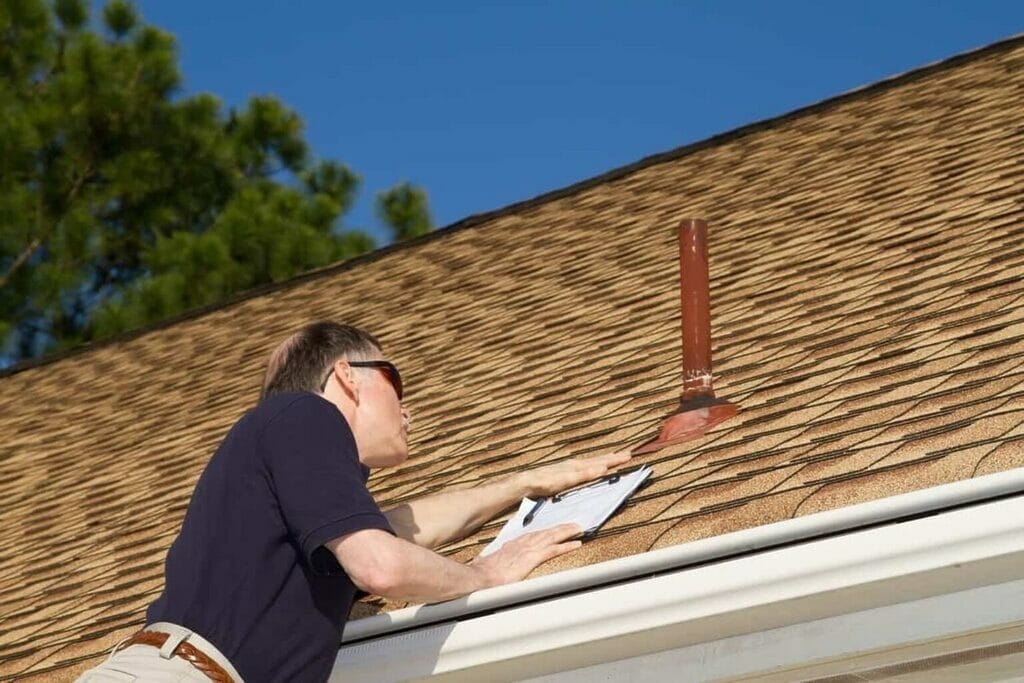The frequency of inspection depends on many factors that every homeowner should know, and fortunately, roof inspections are not expensive. In fact, they can save you a lot of money and trouble in the future. So, if you’re wondering how often you should have your roof inspected, this article will be a helpful guide for you.
By the end of this article, you’ll learn the following:
- The recommended inspection frequency for different types of roofs
- Factors that affect the frequency of roof inspections
- Benefits of regular roof inspections
Let’s find out how often you should get a roof inspection.
Recommended Inspection Frequency For Different Types Of Roofs
As a rule of thumb, you should have your roof inspected at least once a year, preferably in the fall before the winter weather sets in. Fortunately, roof inspections are quick and inexpensive. They can be the best way to prep your roof for the cold weather and winter storms that can cause severe water damage to any home.
Here is a breakdown of the recommended inspection frequency for some of the most common types of roofs:
Asphalt Shingle Roofs: Inspect One To Three Times A Year

These roofs typically last 15 to 30 years, depending on the shingle quality and local weather conditions. If you live in a cold region, your shingle roof needs to be inspected after frequent rain in the fall, before wintertime, and after the snow melts away in the spring.
Metal Roofing: Inspect At Least Twice A Year
These roofs can last up to 50 years or more with proper maintenance and care. If you have a high-end roof made of copper or zinc, you can limit the inspections till after storm events. For a standard galvanized steel or aluminum roof, it’s best to get an annual roof inspection along with checking for storm damage.
Clay Tile Roofs: Inspect At Least Once A Year
These roofs can last up to 70 years or more but are also prone to cracking and other damage over time. So, your tile roof needs a yearly inspection if you live in a hail-prone area. The curved form of the clay tile can withstand high winds and heavy rain but easily succumb to hailstones bigger than an inch.
Flat Roofs: Inspect At Least Twice A Year In The Spring And Fall
Flat roofs are made of single or double-ply membranes. They are more prone to punctures and leaks than pitched roofs, and their average lifespan is about 20 years. So, if you have a flat roof with a TPO, EPDM, or bitumen membrane, you must inspect and maintain them more frequently.
Slate Roofs: Inspect At Least Once A Year
Natural slate roofs can last around 50 to 100 years, or more depending on the quality of the slate. But they’re also very heavy and require specialized maintenance and repair techniques. Thick slate slabs may only need to be inspected after a significant weather event. On the other hand, thin slabs and faux slate roofs need an annual roof inspection.
Furthermore, your roof should also be inspected after any significant repair or renovation work is done on your property. By following these guidelines and taking a proactive approach to roof maintenance, you can ensure your roof lasts as long as possible and provides reliable protection for your home.
In addition to these general guidelines, there are more factors that affect the need for a roof inspection. Let’s look into the additional aspects that demand the need for a roof inspection.
Factors Affecting The Need For Roof Inspections
As you’ve already learned, your local weather and roofing material are the major factors determining how often you should inspect your roof. Other than the above factors, you should also consider the following:
Age Of The Roof
The age of the roof is a critical factor to consider when determining the frequency of inspections. The older the roof, the more prone it is to wear and tear, and the more frequent inspections it will need. For roofs older than 15 years, you should schedule an inspection every six months.
Foot Traffic
If the roof is frequently accessed for maintenance or other purposes, it will require more frequent inspections. Foot traffic, tools, and machinery can cause damage to the roof, which may lead to leaks and other issues. So, you should inspect your roof according to the intensity and frequency of foot traffic. If you’re unsure, you should discuss it with your roofing contractor. They’ll tell you how often you need a roof inspection in such cases and explain the roof inspection checklist.
Regular roof inspections not only protect your roof, but they can also help you save money by catching damage before it calls for a total replacement.
How Regular Roof Inspections Can Benefit Homeowners
Timely roof inspections can increase your home’s resale value. Home appraisers check a roof’s condition and determine whether it’s been taken care of and needs any repairs. If they find it in good condition, it means the new owners won’t need to work on it, and your house will be evaluated at a higher value.
Finally, roof inspection reports are helpful if you ever need to file a roof insurance claim due to storm damage or another issue. These reports become proof of your maintenance efforts, and the insurance company will rule out negligence on your part. Meaning, they will consider external factors as the reason for the damage and are more likely to approve your claim. This is especially true for storm-prone areas of the country.
If you live in Plymouth, MN, we can help keep your roof in top condition.
Free Roof Inspections For Plymouth Homeowners
For years, the team at Excel Renovation has been helping homeowners in the area by offering the peace of mind they deserve. We have the best roof inspectors on our team who have been serving the community for years. Our free roof inspections can be a big help if you’re looking to maintain your home or sell it in the future.
Call us at (612) 439-5005 to discuss your requirements and schedule your free roof inspection with us.

